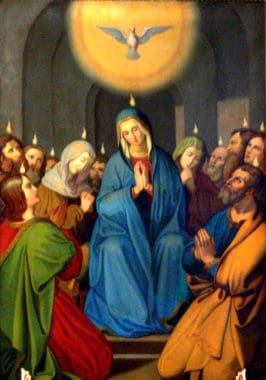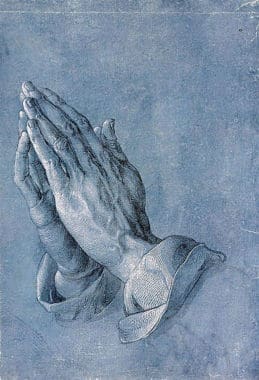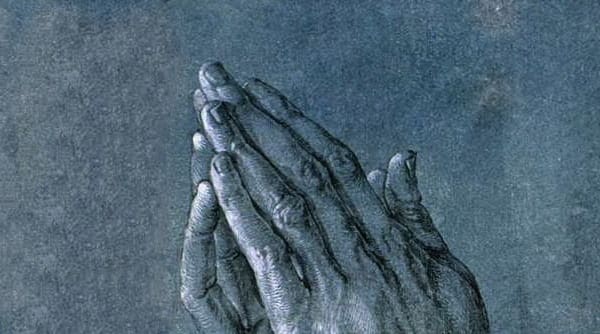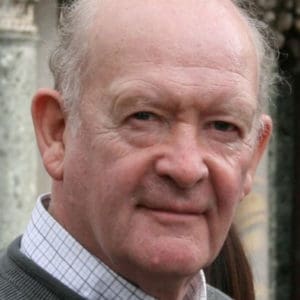Mini-Course on Prayer
Part 1: The Unquenchable Fire of Love
The first Jews used the symbol of unquenchable fire to depict the all-consuming power of God’s love. The first Christians however believed that this love was now embodied in the Risen and glorified body of Jesus, as he rose from the dead on the first Easter day, and they used the radio-active energy of the sun to symbolize its saving power for all of us. This was most particularly manifested when Jesus released it on us all on the first Pentecost day like a supernatural tsunami of love.
That is why the name Sunday was used by the first Christians to describe the most important day of their week, because the sun became for them a symbol of the Risen Christ. Like most symbols they are no more than a shadow of the reality that they symbolize. If you wish to compare the energy released by Our Lord at the Resurrection, you would have to add to it the energy released by the sun plus the sum total of the energy released by all the other stars in the firmament concentrated together. Multiply that energy by infinity and transpose it into love, into pure unadulterated loving. This is the loving that bonded the Father to the Son from all eternity, released on the first  Pentecost to draw us back into the Father who first conceived us, in and through the Son who released it.
Pentecost to draw us back into the Father who first conceived us, in and through the Son who released it.
When St John said that “God is Love” (1 John 4:8). He was not trying to give a definition of what love is in itself as a Greek Philosopher would do, he was describing in his own language that God is Loving; that is what he is, and that is what he does, continually.
Unlike the sun, this love radiates outward and into all who would receive it, not just during the day, but day and night, to the end of time. If you think that I am indulging in pious hyperbole then think again. No man-made myth, no fairy tale has ever told any story like this. No dreamer has ever dreamed such an incredible truth as this – yet it is the greatest truth ever told by the greatest man who ever lived.
Before the Resurrection Jesus was limited by the physical body into which he freely chose to enter. His choice meant that he could only be in one place at a time, so meeting him would have been as difficult as meeting any major celebrity in our time. But that has all changed now, because the same other-worldly love that raised him out of this world on the first Easter day enables him to re-enter it on every day. So now he can enter into us as he promised, so that he can make his home in us and we can make our home in him, as he promised at the Last Supper. All this is possible, not in some distant pipe-dream, but here and now in the present moment. That is why Jean Pierre de Caussade, the great Jesuit mystic said,
“The present moment contains far more than we have the capacity to receive, for it is full of infinite treasures.”
These infinite treasures are all contained within the love of God, as it first strikes the human heart and then like a prism distributes it to every part of the human personality. These spiritual treasures are not only full of the love we need, but the virtues too that love generates within us, enabling us to return this love in kind to God, and then to share what we receive with others. He calls the here and now the “sacrament of the present moment,” because it is the only moment where time touches eternity. It is the only moment where the love of God can reach out to us and we can reach out to him, to begin and to continue the journey for which every human being yearns deep down within them. It is the journey to the ultimate mystical marriage for which we all yearn, where our love and the love of Christ become one, in the Three in One, and to all eternity.
This is what we call the ‘Good News’ because it is the best possible news that anyone can ever hear. But the bad news is that the infinite love that is continually available to us is different from all other forms of energy because love cannot be forced. We know this from our own experience as human beings. No matter how we might love someone or no matter how much they might love us, if that love is not welcome, if it is not received and reciprocated then it will have no effect at all, no matter how powerful it may be. It is the same with God’s love. That is why from the very beginning the first question asked by the great saints and mystics is not, “How do we love God?” but “How do we freely choose to turn and open ourselves to receive his love?”
 It is only then that his love can begin entering into our love in such a way that it can suffuse and surcharge our human loving with the divine. Then it can begin the ascent, in, with, and through Christ, through whom this love is given, to contemplate the Father, in whom our final destiny is brought to perfection. But, and there always seems to be a ‘but’ when we hear good news, if we do nothing to try to receive God’s love then nothing will happen except that instead of going forwards in the spiritual life we will go steadily backwards. Prayer is the word used in the Christian tradition to describe what we do each day to turn and open ourselves to receive this love. That is why in the weeks ahead I will explain in ever greater detail precisely what prayer means and how more than anything else it can completely transform our lives.
It is only then that his love can begin entering into our love in such a way that it can suffuse and surcharge our human loving with the divine. Then it can begin the ascent, in, with, and through Christ, through whom this love is given, to contemplate the Father, in whom our final destiny is brought to perfection. But, and there always seems to be a ‘but’ when we hear good news, if we do nothing to try to receive God’s love then nothing will happen except that instead of going forwards in the spiritual life we will go steadily backwards. Prayer is the word used in the Christian tradition to describe what we do each day to turn and open ourselves to receive this love. That is why in the weeks ahead I will explain in ever greater detail precisely what prayer means and how more than anything else it can completely transform our lives.
These ideas are developed further in my two major works on prayer – Wisdom from the Western Isles and Wisdom from the Christian Mystics.
Editor’s Note: In Part 2, David Torkington writes about listening to St. Teresa of Avila and going forward in prayer.
+
Art for this post on the unquenchable fire of love: Merazhofen Pfarrkirche Josephsaltar Altarblatt Pfingstwunder, 1867, Fidelis Schabet, photographed by AndreasPraefcke, May 2009, PD-Worldwide; Praying Hands study for an Apostle figure of the “Heller” altar (Betende Hände), Albrecht Dürer, ca 1508, PD-US author’s life plus 100 years or less; both Wikimedia Commons.




